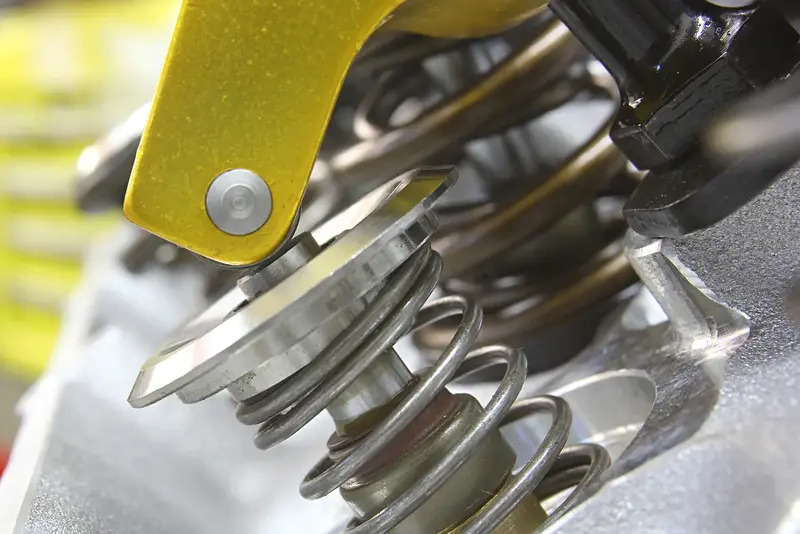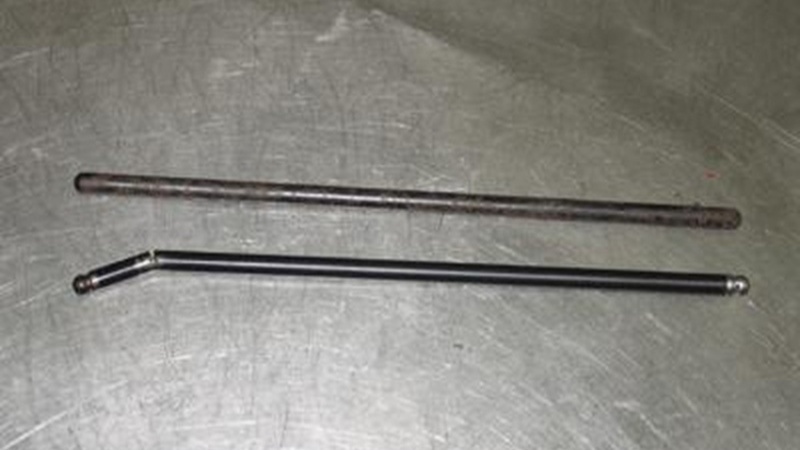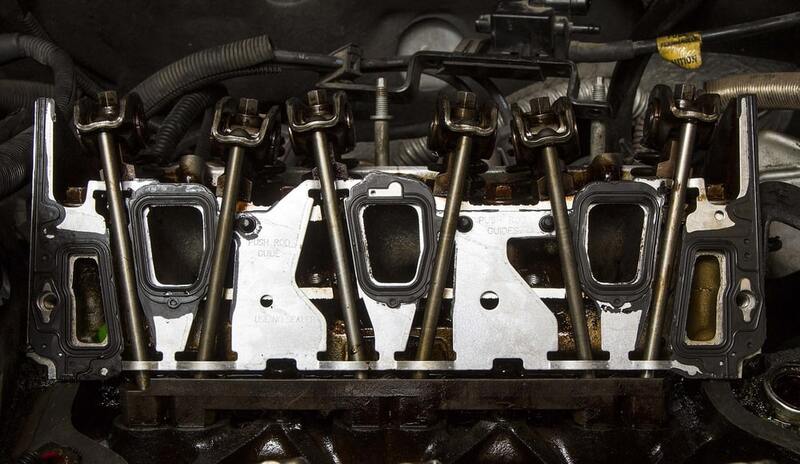Pushrods are one of the many moving parts in the internal combustion engine work to ensure the engine functions properly. It is best described as a cylindrical rod that converts the camshaft’s rotating motion to reciprocating motion to open and close the inlet and exhaust valves in the engine.
Is your Push Rod bent? What happens if a push rod is bent? Can it cause different problems for your vehicle?
This article aims to teach you all you need to know about pushrods, the symptoms of a bent pushrod, the causes of a bent push rod, and solutions to a bent push rod.
Let’s get started!
Pushrod Engines: How Do They Operate?
Pushrod engines are quite similar to overhead valve engines; however, they are valves open and close by converting one or multiple camshafts’ rotary motion to linear motion by a simple setup of pushrods and a few other components.
The overhead valve engines and the pushrod engines have similar components or wherever pushrod engines are more simple. Similar components in pushrod and overhead valve engines include rocker arms and the open and close valves.
Some components found in the overhead valve (OVH) engines are not found in the push rod engine, including the rocker bridge, the distributor, and the oil pump, to name a few.
Despite the sophistication of the OVH engines, they can still not achieve high compression ratios like the pushrod engines.
Although Pushrod engines share similarities with their OHV counterparts – namely, rocker arms that open and close valves – pushrod engines are generally less complicated because they lack many of the extra components found in OHVs, such as the rocker bridge, distributor, oil pump, etc.
They can also achieve higher compression ratios due to increased clearance between the top of the combustion chamber and the cylinder head when compared to OHV engines. In essence, pushrod engines are crude but powerful, and the Old V8 engines are an improvement for the push road engines..

How Pushrods Work?
Pushrods are a key component to the proper functioning of an internal combustion engine. Pushrods generally act as an intermediary between the camshaft Assembly and the inlet and exhaust valves at the combustion chamber.
In essence, pushrods convert the rotational motion of the camshafts to a linear motion that can open and close the valves in the combustion chamber.
There are two valves in the combustion chamber: the inlets and the exhaust valves. The inlet valve allows the air-fuel mixture to get into the combustion chamber. After combustion, the exhaust valve opens up to remove the residue of combustion, which is the exhaust smoke.
The pushrods can activate the valves with the help of The rocker arms, which acts as a swivel that swings up and down through the open and close positions of the valve as the push rods light up and down.
The cyclic linear motion of the push rod in a vertical direction is achieved by the interrelationship of the lobes on the camshaft with the tip of the push rod. The pushrods’ movement is also synchronized with the movement of the pistons because the crankshaft is in timing with the camshaft.
The height of each lobe describes how far the push rod will travel while opening or closing the valves.
Finally, they are usually found in overhead valve (OHV ) engine designs used in cars from the early 20th century till date.
Also Read: Low Engine Oil Pressure (Causes & Solutions)
What Causes Pushrods to get Bent?
A push rod can get bent because of so many reasons, and some of these reasons include excessive wear-and-tear, improper installation, and accidents.
When driving at high speed, friction increases, and the push rod gets so hot that its structural integrity reduces, and whenever it has reached its limit, it may succumb to the stress it is under, causing it to bend.
Also, if there is an installation problem in the valvetrain, the pushrods will be subjected to irregular stress patterns that will cause it to bend over time. For example, suppose the Rocker-arms are loose, or the lift oil lifters are installed improperly. In that case, the push rod is bound to bend over time as the valve assembly will try to compensate for the irregularities in the rocker arms or oil lifters.
Finally, if there is poor lubrication within the valve train, the push rods will be bound to bend because, at high speeds, more friction will create excessive heat, reducing the structural integrity of push rods.
Since the pushrods convert the rotational motion of the camshaft lobes to linear motion, any breach in the flow of motion might cause a structural deformation of that push rod.
One major factor determining if a push rod will bend is the height of the lobes. If the lobes are too high, the push rod has to travel a greater distance, increasing the probability of a bent push rod occurring.
The driving conditions which subject a vehicle to can also increase the probability of a mechanical failure in your valve train as it will put undue stress on the components of the valve train, which may lead to the push rod bending. Some rough terrains include construction sites and unpaved roads.
How Do I Know If My Pushrod Is Bent?
Detecting that you have a bent push rod might be difficult because a majority of its symptoms are quite similar to other mechanical problems, however here are some symptoms of a bent pushrod ;
- Poor Acceleration and Power
- Additional Service Required Light On The car’s Dashboard
- Hard Starting or Rough Idle
- Engine Compartment Filled With Oil (Oil Leaks)
- Tapping Noise from the Top End
How Can I Stop Pushrods from Bending?
There are many ways you can prevent bent pushrod from occurring in your valvetrain, and they are;
- Avoid driving at very high speeds for a long period
- And regularly performing you’re scheduled maintenance
- Installing a rocker guard
- Avoid driving on unpaved roads or rough parents

What Can I Do to Fix a Bent Pushrod?
There is only one solution to a bent push rod: to replace the bent push rod with a new one. Whenever you experience symptoms of a bent pushrod, it is advisable to fix it as soon as possible, and you can decide to do it yourself or employ the services of an expert; however, it is always preferable to go with the latter option.
How Much Does It Cost To Replace A Pushrod?
Replacing a bent push rod with the new one can cost anywhere between $300 to $1000
A damaged push rod should be replaced as soon as possible with an appropriate replacement. If the bent push rod is not placed as soon as possible cause other severe problems were over and contamination of the cooling system as it will allow exhaust fumes or a fixture to escape the combustion chamber
How Can You Tell When to Change a Pushrod?
Whenever a push rod gets bent, it must be replaced as soon as possible to prevent the situation from getting worse. Other components may get damaged, or combustion gases may get into the cooling system and cause overheating if the push rods and not replaced.
Also Read: Engine Rebuild Cost
Frequently Asked Questions – Push Rod Bent
How Do You Check Push Rods?
You can check if your push rod and proper working condition by using a lens dial caliper to measure its overall length.
What Causes Push Rod Failure?
The major causes of a bent push rod are a misadjusted component in the valvetrain or whenever the valve comes in contact with the piston at high speed.
How Do I Know If My Push Rods Are Too Short?
If you tighten down the bolts holding the rocker arm without feeling any resistance, your push rod is short.
Conclusion – Push Rod Bent
Having a bent push rod can spell disaster for your engine if not fixed as soon as possible. With the right knowledge and tools, you can easily fix a bent push rod without any problems; however, it is always advisable to consult your local mechanic for a proper diagnosis of the problem.

